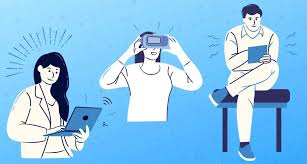By Admin
|
21 Jun 2025
|
Laravel |
0 Comments
Too Much Screen Time Without Breaks
Excessive screen time without breaks can lead to eye strain, headaches, and disrupted sleep patterns.
The Hidden Costs of Constant Connectivity: Too Much Screen Time Without Breaks
In our increasingly digital world, "too much screen time without breaks" has become a pervasive issue, silently impacting our physical and mental well-being. From smartphones and tablets to computers and televisions, screens dominate our daily lives, often leading to a blurred line between work, leisure, and essential tasks. However, this constant connectivity comes with a significant cost, manifesting in various health problems and reduced productivity.
One of the most immediate consequences is eye strain, often referred to as digital eye strain or computer vision syndrome. Prolonged focus on screens can lead to dry eyes, blurred vision, headaches, and sensitivity to light. The blue light emitted by screens is also a concern, as it can disrupt our circadian rhythm, making it harder to fall asleep and contributing to insomnia and poor sleep quality.
Beyond the eyes, a sedentary lifestyle often accompanies excessive screen time, contributing to neck and back pain due to poor posture. Furthermore, a lack of physical activity increases the risk of obesity, cardiovascular diseases, and diabetes. Mental health is also at stake, with studies linking prolonged screen use to increased rates of anxiety, depression, and social isolation, particularly among younger generations. The constant influx of information and social media comparisons can lead to feelings of inadequacy and heightened stress levels.
The solution isn't to abandon screens entirely, but to adopt healthier habits. Regular breaks are crucial. The 20-20-20 rule—every 20 minutes, look at something 20 feet away for 20 seconds—is a simple yet effective way to combat eye strain. Incorporating physical activity, setting boundaries for screen use, and prioritizing in-person social interactions are vital steps towards mitigating the negative effects of our digital-first lives. Ultimately, mindful screen use, coupled with intentional breaks, is key to maintaining a balanced and healthy existence in the modern age.
